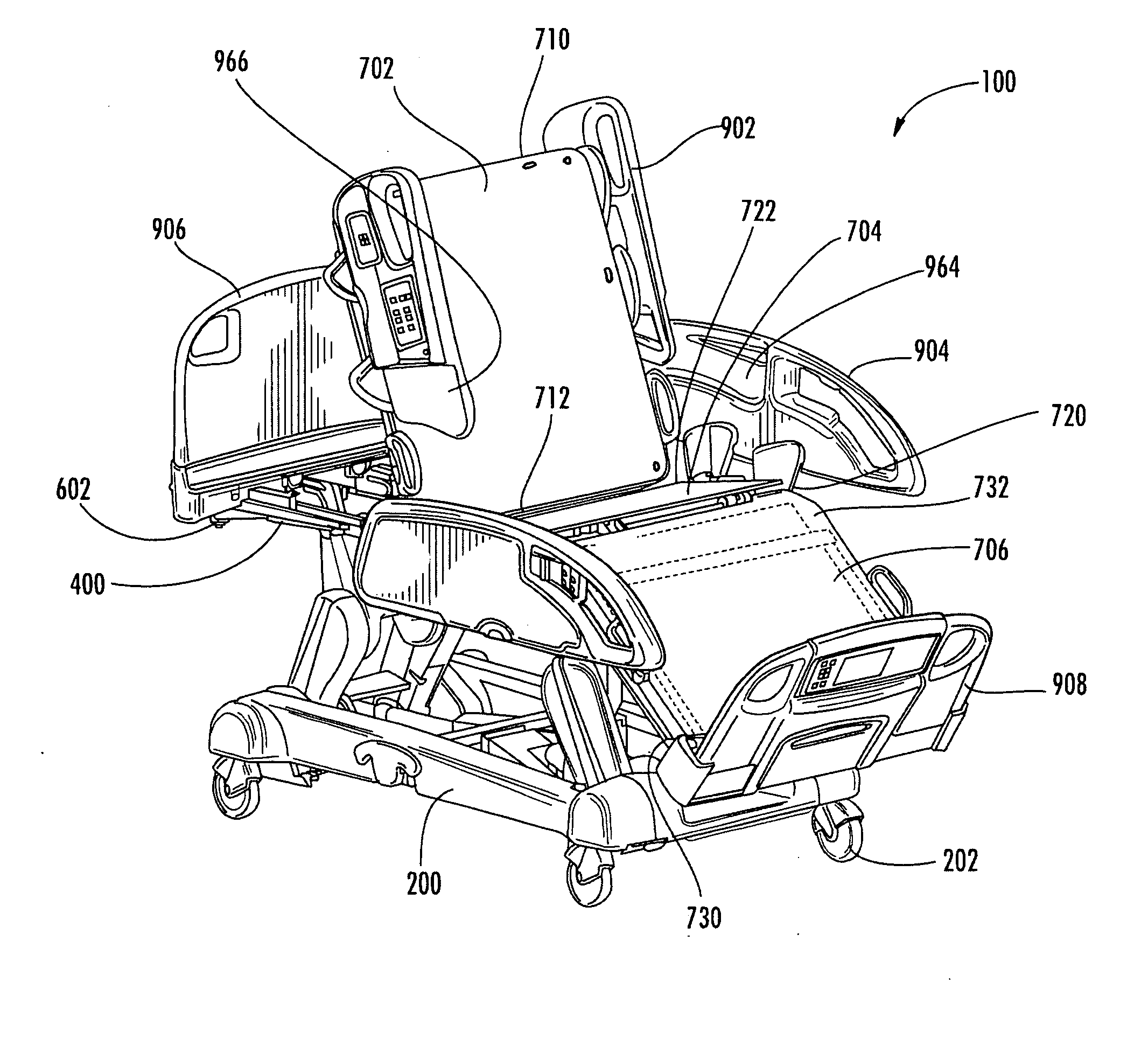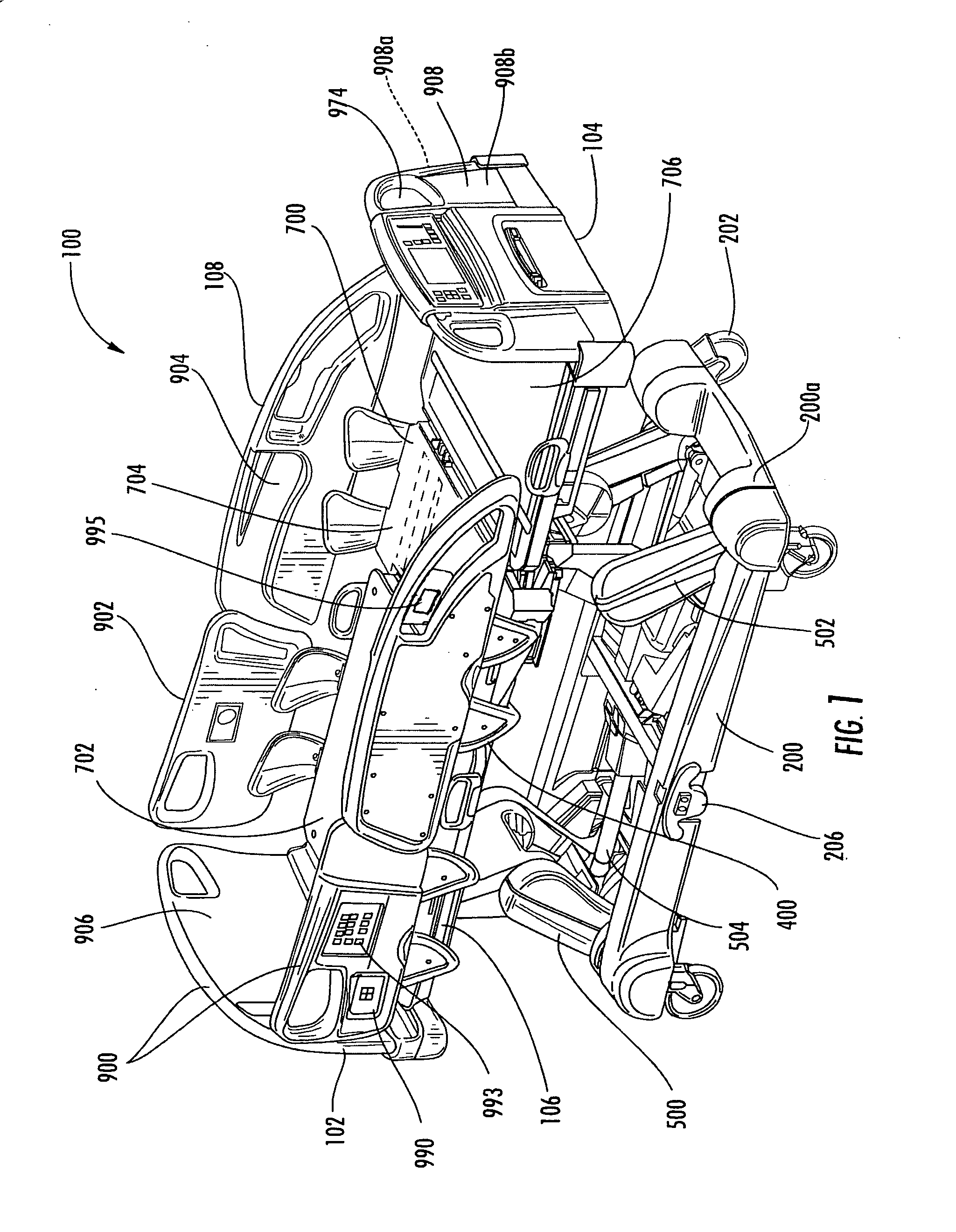Hospital bed
a technology for supporting equipment and beds, which is applied in local control/monitoring, transportation and packaging, brake systems, etc., can solve the problems of unsafe bed movement, large weight of present day beds and patients, and manual or motor-driven mechanism used to raise and lower the fowler section moves too slowly to be acceptable in an emergency situation, etc., to increase the speed of the actuator, and increase the effect of the speed of the movemen
- Summary
- Abstract
- Description
- Claims
- Application Information
AI Technical Summary
Benefits of technology
Problems solved by technology
Method used
Image
Examples
Embodiment Construction
[0155] The bed of the present invention comprises structural elements (Section I), power and control systems (Section II); structural informatics systems (Section III); user-bed communication interfaces (Section IV); and bed-network communications systems (Section V).
[0156] Unless defined otherwise, all technical and scientific terms used herein have the same meaning as commonly understood by one of ordinary skill in the art to which this invention pertains.
I. Structural Elements
[0157] A hospital bed, generally referred to using the numeral 100 and in accordance with an embodiment of the present invention, is generally shown in FIGS. 1 to 8. For the purpose of this description, the bed 100 may be defined to include a head-end 102 and an opposing foot-end 104, respectively defining the ends of the bed 100 at which a user's head and feet may be positioned, and right and left sides 106 and 108 joining these ends.
[0158] The bed 100 generally includes a frame system that forms a pat...
PUM
 Login to View More
Login to View More Abstract
Description
Claims
Application Information
 Login to View More
Login to View More - R&D
- Intellectual Property
- Life Sciences
- Materials
- Tech Scout
- Unparalleled Data Quality
- Higher Quality Content
- 60% Fewer Hallucinations
Browse by: Latest US Patents, China's latest patents, Technical Efficacy Thesaurus, Application Domain, Technology Topic, Popular Technical Reports.
© 2025 PatSnap. All rights reserved.Legal|Privacy policy|Modern Slavery Act Transparency Statement|Sitemap|About US| Contact US: help@patsnap.com



